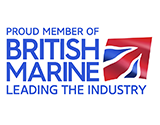- Preparation for Sea – engine checks, sail selection, securing and stowage below deck and on deck.
- Deck Work – reefing, shaking out reefs, sail changes to suit conditions, preparation to anchor, preparation to come alongside or secure to a mooring, anchoring, mooring and berthing in various conditions.
- Navigation – the deck log, chartwork and routine navigational duties on passage including visual fixes, use of GPS, use of waypoints, working up EPs, estimating tidal heights and tidal streams, plotting a course to steer allowing for tide and leeway, knowledge of buoyage, use of echo sounder and lead line.
- Pilotage – pilotage plans for harbour entry or departure, leading lines, clearing bearings, back bearings, transits and soundings as aids to pilotage.
- Meteorology – sources of forecasts, interpretation of shipping forecasts and inshore waters forecasts, use of the barometer as a forecasting aid.
- Rule of the Road – working knowledge of the International regulations for Prevention of Collisions at Sea.
- Engines – daily engine checks, how to change water pump impellers. How to change a fuel filter and bleed the fuel system.
- Provisioning.
- Emergencies – Man overboard recovery – distress flares, liferaft launching and boarding, use of VHF in an emergency, securing a tow, rescue procedures including helicopter rescue.
- Boat Handling Under Power – bringing a yacht safely to and from an alongside berth, mooring buoy or anchor is various conditions of wind and tide.
- Boat Handling under Sail – bringing a yacht safely to and from a mooring buoy and anchor in various conditions of wind and tide, steering dn trimming sails effectively on all points of sailing.
- Passage making – planning and execution of a coastal passage in familiar waters in daylight taking account of navigational hazards, tides, and limitations imposed by the type of boat and the strength and experience of the crew.
- Night Cruising – experience of sail cruising at night – including leaving and entering harbour, special considerations of lookout, pilotage plans and identification of marks at night.
Syllabus for RYA Day Skipper Practical (Sail)
“
Copyright © 2024 Elite Sailing in Chatham, Kent, near London, All rights reserved.
Elite Sailing is a Trading Name of Allan Yachting Limited
Website Design by madcreative.


